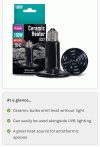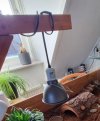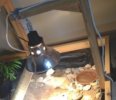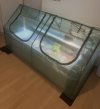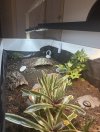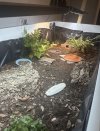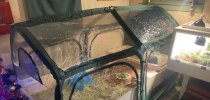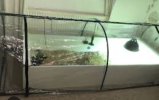waterlilykari
New Member
I am debating which tortoise to get in the near future and still on the fence on which. I already have a setup for a baby, with few exceptions (mainly, I am going to be acquiring the bits and pieces that would be specific to breed like substrate and environmental decor after the choice between breeds is finalized) I have the the main stuff like light/heat/humidity equipment, and will obviously be customizing the levels of those for whatever the little tort needs.
I am debating between a redfoot tortoise, a Burmese star tortoise, and a high-white leopard tortoise. I have a reliable source for the redfoot and leopard, but if I do end up going with the star tortoise, I would much appreciate suggestions as to reliable breeders. Unfortunately the breeder I have been in contact with via FB about star tortoises is an unknown as of yet. There have been no real red flags, but they are also offering the torts for far below what I’ve ever seen anyone else offer a star tortoise for ($125 “rehoming fee” which includes shipping) so it feels too good to be reliable, and I’m still also waiting to hear back on the answers to a few questions I hope will give me a better gauge of them overall.
Can someone with experience with these breeds please give me any pros/cons you have to each, or if you chose not to get one after considering, can you please tell me why? I am also finding mixed reports on if they do best in a group, a pair, or single, so any anecdotes you have there are also appreciated. Thank you!
I am debating between a redfoot tortoise, a Burmese star tortoise, and a high-white leopard tortoise. I have a reliable source for the redfoot and leopard, but if I do end up going with the star tortoise, I would much appreciate suggestions as to reliable breeders. Unfortunately the breeder I have been in contact with via FB about star tortoises is an unknown as of yet. There have been no real red flags, but they are also offering the torts for far below what I’ve ever seen anyone else offer a star tortoise for ($125 “rehoming fee” which includes shipping) so it feels too good to be reliable, and I’m still also waiting to hear back on the answers to a few questions I hope will give me a better gauge of them overall.
Can someone with experience with these breeds please give me any pros/cons you have to each, or if you chose not to get one after considering, can you please tell me why? I am also finding mixed reports on if they do best in a group, a pair, or single, so any anecdotes you have there are also appreciated. Thank you!
